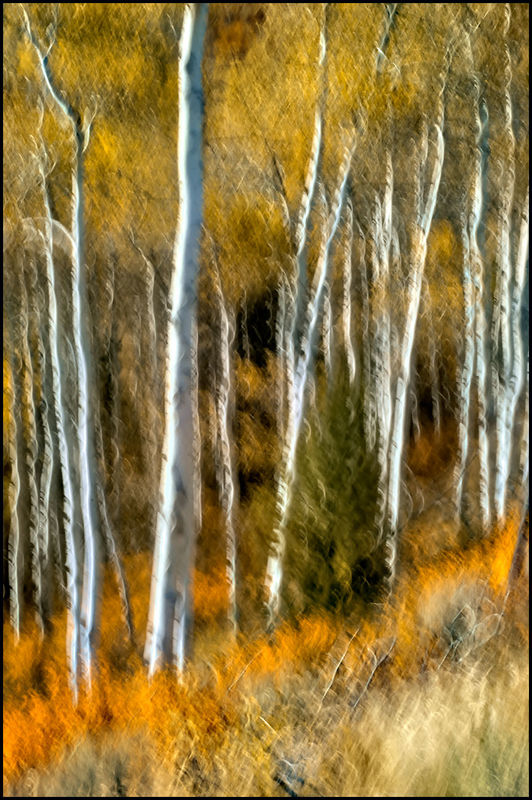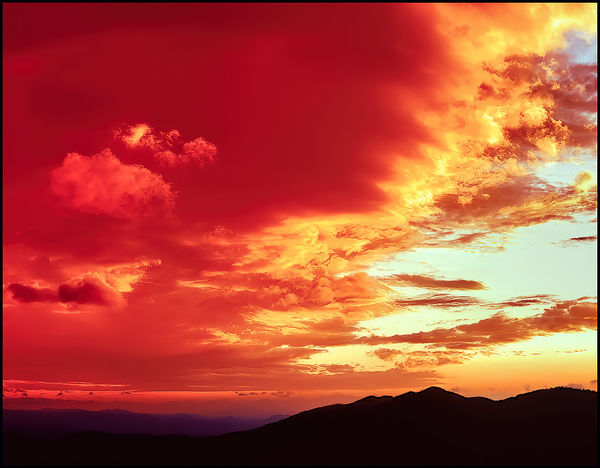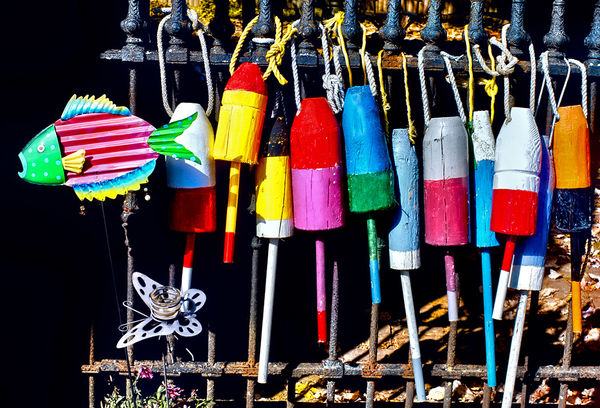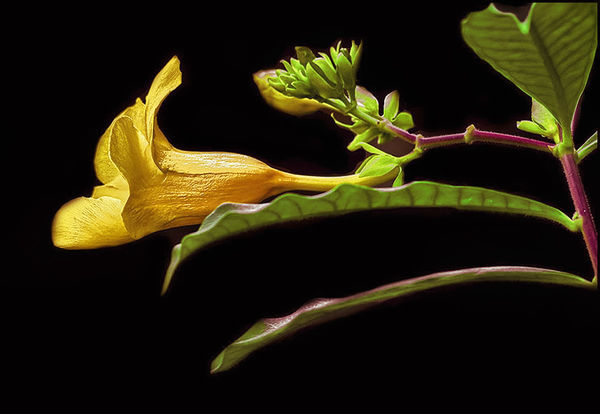PHOTOGRAPHY AND THE ART OF SEEING.
Feb 17, 2020 06:10:09 #
We as photographers and especially now that we use digital cameras are often confronted with a dilemma. Is my old camera ready for an update? Will a modern one with advanced technologies along with a professional lens improve my photography?
If you are not satisfied with the images you are making now a new, more advanced camera will not make a difference. Cameras and lenses are only tools.
Several years ago, when I was still using film I was shooting with a Nikon F100, an excellent professional level camera and several very good quality AF and manual focus lenses and instead I was not happy with my work.
The images were acceptable but not great. They were indeed boring. My frustrations made me put the camera aside and one day I came across a book written by famous Canadian photographer Freeman Patterson, “Photography and the Art of Seeing.” I was curious and I bought the book. It was easy reading and had lots of exercises to teach the student how to see photographically.
In clear terms Mr. Patterson was showing in his book how to achieve discipline, how to be patient. A photographer who wants to see, who wants to make fine images must first recognize the value of the familiar. The book opened up my eyes and I began to apply the principles and exercises described by him. I started to see a dramatic change in the quality of my images and my approach to my subjects. I have been looking but not actually seeing. The new approach was a radical departure of what I have been doing in the past. I was excited about the new images I was about to make.
Although at times I photograph on impulse many more times I am thinking of what I am going to do. Instead of shooting from a selected spot now I move around and I look at the light, its direction and its effect on the subject. I learned how important it is to be patient and how to use discipline to wait for an opportunity which usually presents itself. Now I am beginning to see photographically.
Here are four images that illustrate what I have been saying. The first image was made from aspens growing at the side of the road in Grand Tetons National Park. I moved the camera up and down during the exposure using a small lens opening and a long shutter speed. Now I see those aspens in a different way than I saw them before.
The second shot was a sunset over the Appalachians in mid-October. Instead of shooting the sunset as I originally saw it I began to watch the approaching clouds to my left. I used discipline and just waited with my camera on a tripod till the composition was exactly what I had envisioned. I was rewarded with a beautiful and colorful image.
I was visiting Maine and it was close to midday, the worse time to photograph because the light is too strong with prominent, contrasty shadows. I was looking in this particular maritime store to all of the paraphernalia that was being shown to tourists trying to find something interesting enough for me to photograph till I found these colorful lobster markers with the ornamental fish to the side and made the shot.
The final shot was a flower I saw among many others in the same plant. The plant looked beautiful but it was a visual chaos like it was. A shot of all the flowers would have failed to convey the beauty and feelings of what I saw. I isolated this one from the bunch. The black background brings attention to the flower. Notice that I have not mentioned the cameras or lenses I used. Cameras and lenses are only tools.
Next time you go out to photograph make a pause, relax and take the time to look carefully around you. Open your eyes and take a different approach to seeing. Observe what is going on around you. Your eyes will begin to discover subjects that were so familiar to you that you did not pay attention to them before.
Perhaps the first subject you see is not the best one to capture your emotions or what you had in mind. Perhaps the angle from where you look at it is not the best one. Look at the light and observe what it does to your subject. Observation of the subject should be your first step.
Be patient and think about what you are going to do. Use your intellect and your imagination to capture the beauty of your subject. A tripod is a great tool to improve on the visual design.
Understand this is a totally different approach to what you have been doing in the past. You are beginning the beautiful journey of seeing photographically.
If you are not satisfied with the images you are making now a new, more advanced camera will not make a difference. Cameras and lenses are only tools.
Several years ago, when I was still using film I was shooting with a Nikon F100, an excellent professional level camera and several very good quality AF and manual focus lenses and instead I was not happy with my work.
The images were acceptable but not great. They were indeed boring. My frustrations made me put the camera aside and one day I came across a book written by famous Canadian photographer Freeman Patterson, “Photography and the Art of Seeing.” I was curious and I bought the book. It was easy reading and had lots of exercises to teach the student how to see photographically.
In clear terms Mr. Patterson was showing in his book how to achieve discipline, how to be patient. A photographer who wants to see, who wants to make fine images must first recognize the value of the familiar. The book opened up my eyes and I began to apply the principles and exercises described by him. I started to see a dramatic change in the quality of my images and my approach to my subjects. I have been looking but not actually seeing. The new approach was a radical departure of what I have been doing in the past. I was excited about the new images I was about to make.
Although at times I photograph on impulse many more times I am thinking of what I am going to do. Instead of shooting from a selected spot now I move around and I look at the light, its direction and its effect on the subject. I learned how important it is to be patient and how to use discipline to wait for an opportunity which usually presents itself. Now I am beginning to see photographically.
Here are four images that illustrate what I have been saying. The first image was made from aspens growing at the side of the road in Grand Tetons National Park. I moved the camera up and down during the exposure using a small lens opening and a long shutter speed. Now I see those aspens in a different way than I saw them before.
The second shot was a sunset over the Appalachians in mid-October. Instead of shooting the sunset as I originally saw it I began to watch the approaching clouds to my left. I used discipline and just waited with my camera on a tripod till the composition was exactly what I had envisioned. I was rewarded with a beautiful and colorful image.
I was visiting Maine and it was close to midday, the worse time to photograph because the light is too strong with prominent, contrasty shadows. I was looking in this particular maritime store to all of the paraphernalia that was being shown to tourists trying to find something interesting enough for me to photograph till I found these colorful lobster markers with the ornamental fish to the side and made the shot.
The final shot was a flower I saw among many others in the same plant. The plant looked beautiful but it was a visual chaos like it was. A shot of all the flowers would have failed to convey the beauty and feelings of what I saw. I isolated this one from the bunch. The black background brings attention to the flower. Notice that I have not mentioned the cameras or lenses I used. Cameras and lenses are only tools.
Next time you go out to photograph make a pause, relax and take the time to look carefully around you. Open your eyes and take a different approach to seeing. Observe what is going on around you. Your eyes will begin to discover subjects that were so familiar to you that you did not pay attention to them before.
Perhaps the first subject you see is not the best one to capture your emotions or what you had in mind. Perhaps the angle from where you look at it is not the best one. Look at the light and observe what it does to your subject. Observation of the subject should be your first step.
Be patient and think about what you are going to do. Use your intellect and your imagination to capture the beauty of your subject. A tripod is a great tool to improve on the visual design.
Understand this is a totally different approach to what you have been doing in the past. You are beginning the beautiful journey of seeing photographically.
Feb 17, 2020 06:21:06 #
Feb 17, 2020 06:24:21 #
camerapapi wrote:
We as photographers and especially now that we use... (show quote)
Nothing new here. Basic rules and approach to photography tenets which most of us follow.
Feb 17, 2020 06:39:06 #
Feb 17, 2020 06:40:25 #
Thanks for the reminders. After my over 50 years in photography I sometime forget.
I always try to remember to look and see before I shoot.
Don


I always try to remember to look and see before I shoot.
Don



Feb 17, 2020 07:03:30 #
Feb 17, 2020 07:05:18 #
Feb 17, 2020 07:23:24 #
Julian wrote:
Nothing new here. Basic rules and approach to photography tenets which most of us follow.
This can be very new to many. William touches on a very important concept - how to turn photography from a voyueristic/docomentation-oriented endeavor into something that is very experiential and involves all of one's senses - and examines a scene for contrast, luminosity, color, texture, form - and using a mindful approach, allow oneself to capture a scene without judgement or preconception.
When shooting, having a calm mind and being able to see things as they are without imposing one's own interpretation - aka - "seeing fresh" - will reward one with very satisfying images. The concept of "Miksang" which translates from Tibetan as "Good Eye" is at the core of this approach to photography.
I will argue that this is not the approach that most photographers use.
Being able to differentiate the commonplace from the special/unique is a discipline that requires a calm mind.
There is much to read on the topic of Contemplative Photography - Freeman Patterson, George DeWolf, Andy Karr, Michael Wood, John McQuade, David Ulrich, Dick Devries, John McQuade, and others have written extensively on the subject.
What you will see once exposed to a new way of seeing, is that the basic rules and photography "tenets" are very basic and extremely constraining - and yes, most of us do follow them as a means of establishing a structure and discipline to allow us to take pictures. Seeing Fresh, Miksang, Contemplative Photography frees one of these constraints.
http://seeingfresh.com/
https://www.youtube.com/watch?v=8PTfzVw96QA
https://www.youtube.com/watch?v=tccPU91aKUo
https://www.lionsroar.com/how-to-practice-contemplative-photography/
https://www.quarryfarm.com/wp/about-miksang/
I am glad that William posted this - it just might help some of us to pause and think why we take the pictures we do, and how we can see differently to create different images using the elements of the scene as they reveal themselves to us, and not relying on "correct" camera settings focal length, depth of field, ISO, shutter speed, color, contrast, sharpening, etc to make an image.
I disagree with Williams article on his last point - it's less about one's emotions and what one may have had in mind - it's entirely about "the moment" or "witnessing" reality - a very "Zen" thing. https://zenstudies.org/teachings/what-is-zen/
Otherwise, he totally describes a new way of seeing - and his examples do capture this.
Feb 17, 2020 07:26:23 #
Feb 17, 2020 08:00:06 #
William, thank you so much for taking the time to create this thread, and for Gene51 expanding the discussion. It's obvious that many on UHH do not take photos this way, and many of us may have at one time but have grown lazy and need a refresher. In fact, I'm pretty sure I have Patterson's book. Time for me to re-read it and slow down 

Feb 17, 2020 08:16:21 #
I haven't read Freeman's book, but have asked my library to hustle it up. There's another book out there that I think espouses the same concept. That being "How to Look at Everything" by David Finn, which I've read a couple times. When I'm not out chasing down critters to shoot, I enjoy making something out of what at first glance appear as simple landscapes. For this, in addition in experimenting and a few books on the subject, I get inspired by Thomas Heaton, a Scotsman, who posts often on the subject via YouTube. Thank you for sharing this, William, and also to Gene51's comments.
Feb 17, 2020 08:35:10 #
Feb 17, 2020 08:58:47 #
Really enjoyed your post. It was a good read for those of us here who don't know everything.
Feb 17, 2020 09:26:51 #
I cannot recommend this book enough. It is the best photography book I’ve ever read, and the best book bargain ever when you buy “used” from Amazon. I ran across it a few years into my photographic journey and credit it with much of whatever creativity I’ve subsequently uncovered in my work. Early on, I was over-concerned with technical issues rather than composition and artistic issues. Of course, you can discover these things in classes, but for those of us who live far from where there are classes or clubs, a book can be a grand substitute.
You’ve done a great job of reviewing it and illustrating its lessons.
You’ve done a great job of reviewing it and illustrating its lessons.
Feb 17, 2020 10:02:47 #
Thank you for posting this, and thank you Gene for the thoughts and links.
The only thing I have to add is the contribution of using film gear to achieving mindfulness. The deliberateness of the process, the self limitation imposed by a finite number of exposures, and the delay between what I see in the field and what I see in the final image all help me toward this goal.
It’s particularly useful
IMHO to practice your visualization techniques. When you see your results, you can work backward toward what you were “seeing” in your mind’s eye when you clicked the shutter. The closer they come together, the better you’ll be able to achieve your artistic vision.
Andy
The only thing I have to add is the contribution of using film gear to achieving mindfulness. The deliberateness of the process, the self limitation imposed by a finite number of exposures, and the delay between what I see in the field and what I see in the final image all help me toward this goal.
It’s particularly useful
IMHO to practice your visualization techniques. When you see your results, you can work backward toward what you were “seeing” in your mind’s eye when you clicked the shutter. The closer they come together, the better you’ll be able to achieve your artistic vision.
Andy
If you want to reply, then register here. Registration is free and your account is created instantly, so you can post right away.














